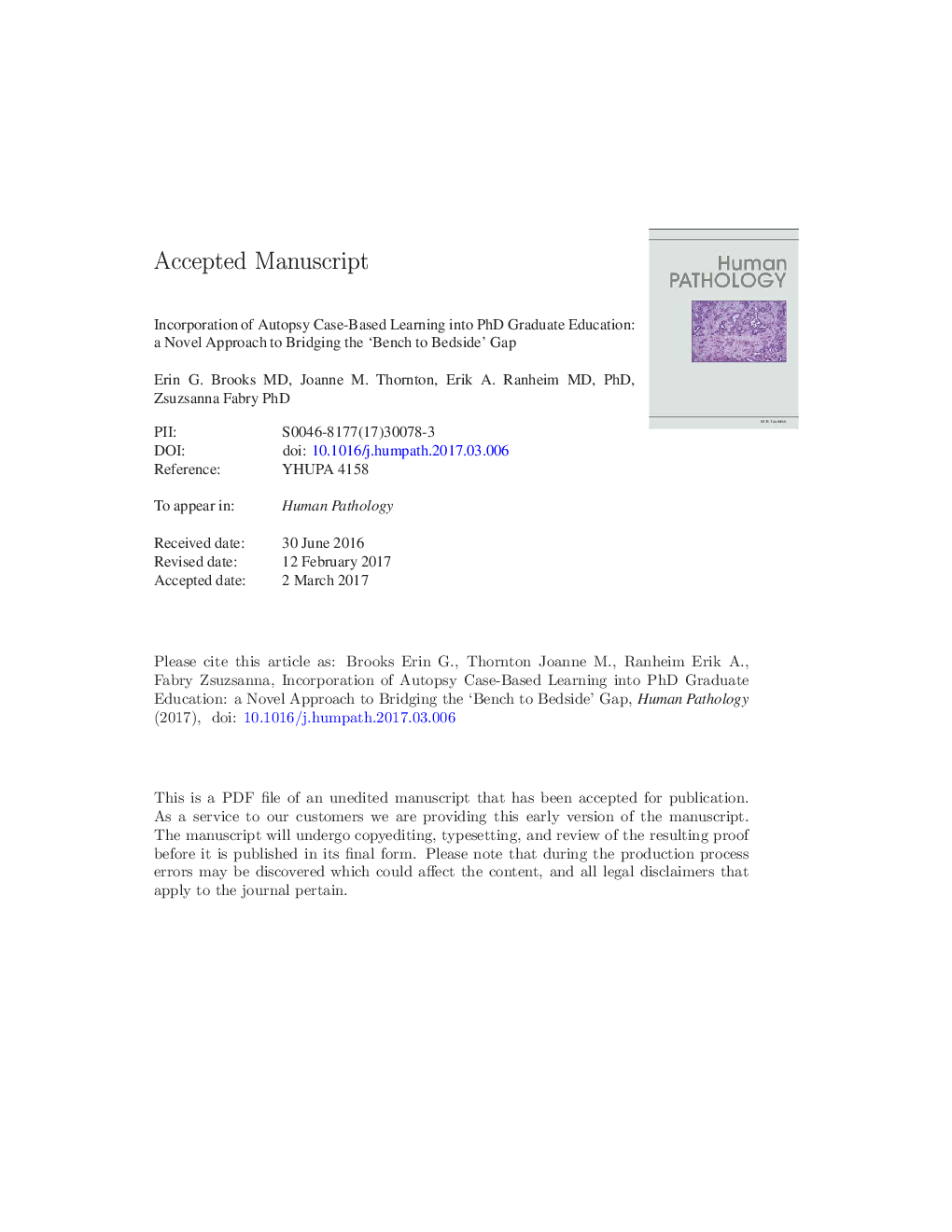| Article ID | Journal | Published Year | Pages | File Type |
|---|---|---|---|---|
| 5716083 | Human Pathology | 2017 | 18 Pages |
Abstract
Given the current rapid expansion of biological knowledge and the challenges of translating that knowledge into clinical practice, finding effective methods of teaching graduate students clinical medicine concepts has become even more critical. The utility of autopsy in medical student and resident education has been well established. Multiple studies have reported it to be a helpful means of teaching anatomy, pathophysiology, clinical problem-solving skills, and medical diagnostic techniques. Although various models of training PhD candidates in clinical medicine have been reported, an autopsy-based curriculum has not been previously described. For over 4 years, our pathology department has offered a novel semester-long autopsy-based course to educate future Cellular and Molecular Pathology scientists about clinical medicine. Our results indicate that this “hands-on” approach is a popular as well as effective means of teaching the pathogenesis of disease at the level of the cell, organ, and patient. The course reputation has recently led to requests to open registration to graduate students from other university programs as well as undergraduate students. Additionally, it has played an important role in our Cellular and Molecular Pathology program's recent receipt of a 5-year renewal National Institutes of Health-funded T32 award. Overall, this course model has been successful at our own institution and could provide a useful template for other institutions seeking to provide graduate investigators with in-depth exposure to clinical medicine.
Related Topics
Health Sciences
Medicine and Dentistry
Pathology and Medical Technology
Authors
Erin G. MD, Joanne M. BS, Erik A. MD, PhD, Zsuzsanna PhD,
